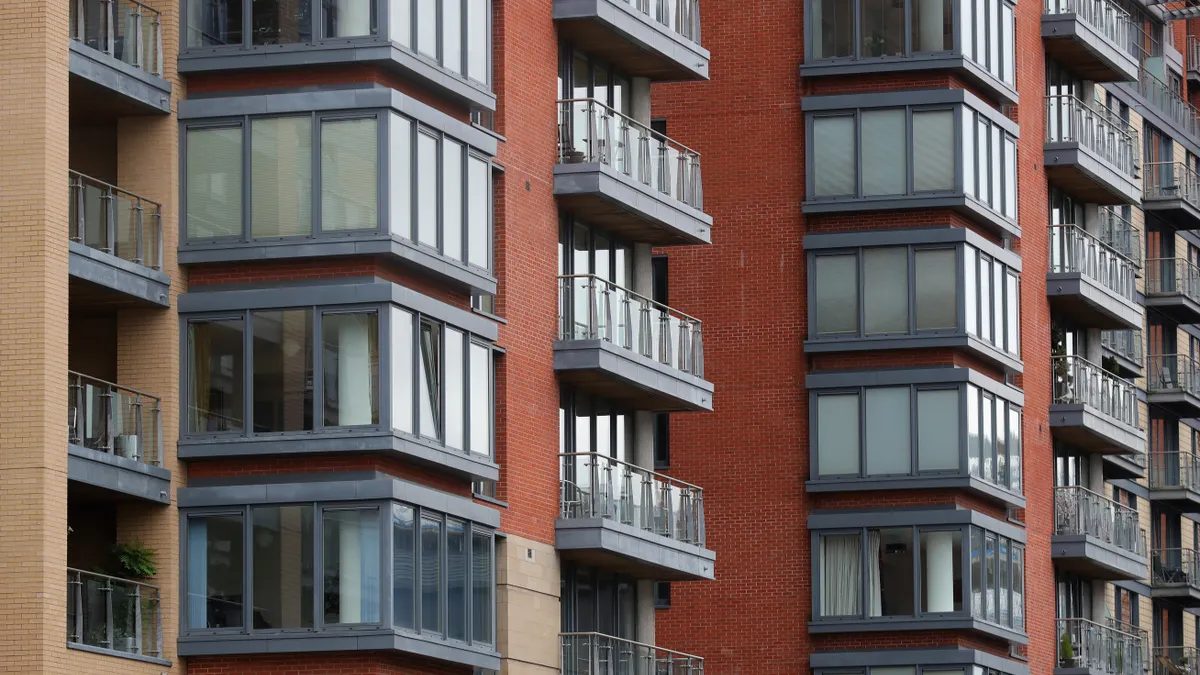For Blackfin, 2021 was a banner year until the dog days of summer. After buying 13 apartment buildings with a total of 4,000 units, Blackfin closed its last deal near year-end as inventory vanished and prices smashed records.
"We worked twice as hard in the last part of the year and have less to show for it," said Doug Root, co-founder and managing director of Arlington, Virginia,-based Blackfin, an investment property manager.
Apartment sales totaled $335.3 billion last year, an annual increase of 128% and dwarfing the previous high of $193 billion in 2019, according to New York-based research firm Real Capital Analytics. Transaction volume could jump another 10% this year, according to investment firm real estate services firm CBRE.
As millennials moved into apartments after the global financial crisis, market dynamics changed dramatically in the 2010s. Apartments became the top-selling asset class in 2016, overtaking office buildings, and still retains an iron grip on the No. 1 spot, according to RCA.
Institutional investors looking for strong returns are outbidding the weak and prudent. Faced with a pandemic, war, inflation, labor shortages and supply chain disruptions, institutional investors are willing to accept the historically lower returns on apartment buildings.
"There are hundreds of billions of dollars sitting on the sidelines, looking to get into an apartment investment today," said Jim Costello, senior vice president for RCA. "Even though we've seen some inflation and an uptick in the 10-year Treasury, it's still really low compared to the long term."
Sales volume more than doubles, while, values jump 94%
| Year | Total Sales (billions) | CPPI (values) |
| 2021 | $335.3 | 242.2 |
| 2020 | $146.9 | 196.1 |
| 2019 | $193.1 | 182.2 |
| 2018 | $177.8 | 166.0 |
| 2017 | $155.4 | 151.0 |
| 2016 | $160.4 | 137.3 |
| 2015 | $153.0 | 124.8 |
SOURCE: Real Capital Analytics
The COVID-19 pandemic only widened the gap between apartments and other sectors. While retailers closed their doors, hotels and offices sat empty and apartments were flooded with applications from people moving to new areas, homeowners who lost their jobs, needed to take care of sick relatives or couldn't keep up with inflation.
Interest rates in the meantime fell to below to 2.7%, whetting the appetite for brick-and-mortar assets with tasty gains.
In 2021, the average rents on new leases rose 14.4%, and the vacancy rate rose to 97.5% in the fourth quarter, according to RealPage. The market was on fire.
"Toward the second half of the year, deal volume was not just above where we were in 2020 but well above the average from 2015 to 2019," Costello said.
Surging demand chasing a limited supply led to an almost 24% increase in apartment prices last year, according to RCA's Commercial Property Price Indices (CPPI), which measures the value of commercial property.
Which raises the pin-prick question.
"I've quietly had conversations with institutional investors and, while they won't call it a bubble, a lot of them will say it's hard for them to hit their return targets with these prices," said Ryan Severino, chief economist for the Chicago-based commercial real estate services firm JLL.
A new normal?
Reality check: are these high prices here to stay? If so, will long-term buyers need to accept lower returns in order to find deals or risk being left behind?
"It used to be that you could get 8% or 9% levered returns. Now, it's like 5%. They're kind of pricing apartments like a bond proxy," said Haendel St. Juste, managing director of REITs for investment bank Mizuho Securities.
If you ask Adam David Lynd, today's prices are here to stay.
Case in point in Austin, Texas,: the Lynd Group bought a portfolio of three properties for around $160,000 a unit in March 2020. Last July, it bought a similar garden-style property, built-in 2009, for $195,000 a unit. By October, the price tag was $225,000 for units built in 2001. Cha-ching.
"The prices jumped that fast," said Lynd, president and CEO of the Shavano Park, Texas-based apartment developer. "However, [rising] in lockstep is the influx of people, the shortage of housing, the rising cost of housing in the city of Austin."
While paying these prices may not make sense to long-time industry veterans, they're probably going to have to meet them to compete right now.
"If you use your own logic and your own framework of history, you're looking at this market saying, 'No, I will never buy this because the prices are insane,'" Lynd said. "Yet, I promise you in three years, there will be people looking back saying 'Why didn't I buy? They are only more expensive now.'"
Unless there is another economic shock at the level of the COVID-19 pandemic or the global financial crisis, Severino doesn't see apartment prices falling.
"I hate to say this since we just went through one but I think you'd need to see really some kind of downturn in the economy to fully upset the applecart because it just seems like the demand-supply imbalance is so strong," Severino said. "That is going keep pushing fundamentals, even in the face of rising interest rates."





















